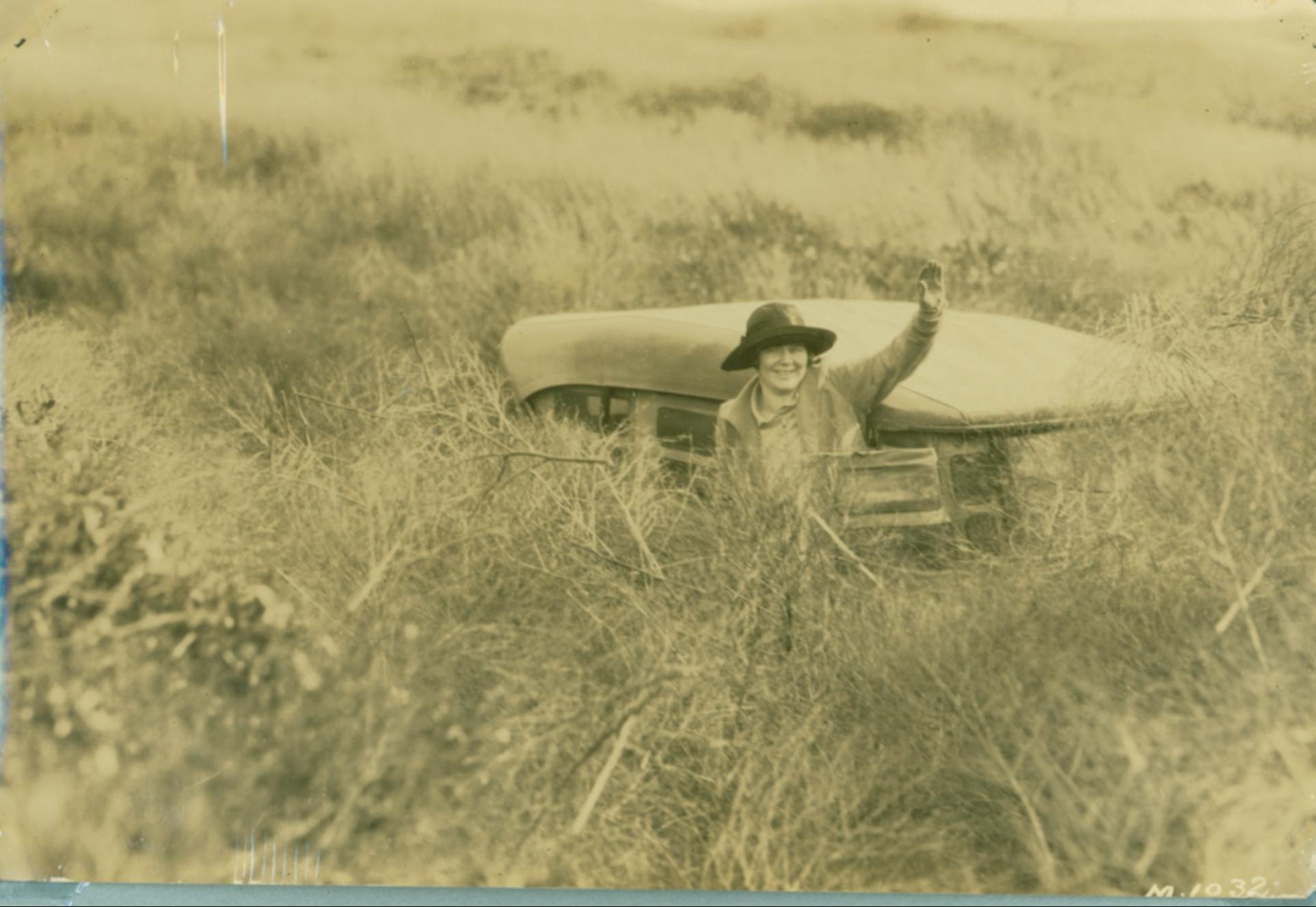We’re not sure this lady is standing in technically true tumbleweeds, but we’re certain that today she’d be sending up a distress flare or texting Triple A to help peel her away from a cringe-worthy tick population.
She looks perfectly content, though, in this photograph from 1926. We can even imagine her waving to summer visitors of the future as she stakes out territory for them on what was then Long Island’s far-eastern frontier. At about the time she was driving an “off-road” vehicle of the day, Carl Fisher – whose transformation of the Montauk landscape is documented in the Montauk Library’s Montauk Beach Development Corporation Collection – was blasting and bulldozing his way toward a new luxury resort called Montauk.
Now that Fisher’s dream has been at least partially realized, many year-round residents have traditionally looked forward to what is known as Tumbleweed Tuesday, the day after Labor Day. It used to be that life would quiet down when all the abundant, frenetic recreationists left town after their three-day weekend. In recent years, however, the trend has grown less distinct, with many staying into the fall, and some lingering even longer.
Most everyone is familiar with the prickly Russian thistle blowing across Western ghost towns, but tumbleweeds in general are simply plants whose upper portion dries up, breaks off and then rolls in the wind, dispersing seeds. Vicki Bustamante wrote about a surprise sighting of one such plant, a winged pigweed, in Wainscott, for the Long Island Botanical Organization, and also said that a pretty native “tumbleweed,” purple lovegrass, is presently growing on Sunrise Highway. Two horticultural consultants from Cornell Cooperative Extension, Sandra Vultaggio and Alice Raimondo, said some tumbleweeds would be likely to live in sandy, open areas hereabouts, or that debris from a fall landscape cleanup could conceivably escape and become “tumbleweed.”
In any case, we can be grateful not to have many tumbleweeds of the usual sort. In other environments they have been known to bury cars, seal off houses and trap occupants, block highways, spread wildfires and perhaps even radioactivity from nuclear power plants as they travel. “Entire town buried under bizarre ‘hairy panic’ weed that has baffled experts,” said a headline from 2016, referring to an Australian term for the plant; “Houses disappeared’ when tumbleweeds rolled into this California city,” was another.
Tumbleweeds are also highly invasive. Which raises the question: Maybe “Tumbleweed Tuesday” should be closer to Halloween?
http://khkeeler.blogspot.com/2015/12/plant-ecology-tumbleweeds-lifestyle.html
By Virginia Garrison


Reply or Comment